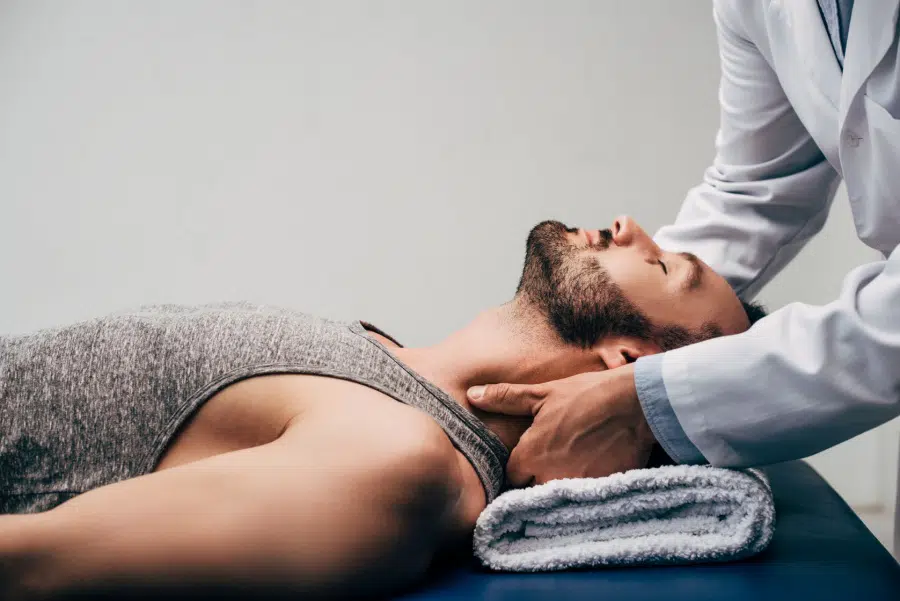Many patients seek out chiropractic care for neck pain relief. There are many studies demonstrating that manual therapies performed by chiropractors can offer significant benefits. These include non-specific or mechanical neck pain; as well as neck pain arising from injuries related to sports, car accidents, and falls. What are some of these manual therapies?
Chiropractic Methods for Neck Pain
Spinal manipulative therapy (SMT) involves moving the head and neck to a firm end-range of movement with a fast, thrust at specific joints. The thrust is a “high-velocity, low amplitude” (HVLA) movement. It’s also known as “an adjustment”, which is unique to the chiropractic profession.
Spinal mobilization (SM) is a low-velocity, low amplitude movement. It is typically slow and rhythmic, gradually increasing the depth of a back-and-forth movement, often combined with manual traction. Here, joint cavitation is less common.
Exercise training that focuses on strengthening the deep neck flexor muscles. Other exercises are specifically designed for each individual patient based on their specific needs. They can result in better treatment outcomes compared to a generalized, non-specific exercise program. SMT/SM and exercise combined report better long-term outcomes than SMT/SM alone. SMT/SM typically outperforms exercise therapy alone.
Physical therapy modalities (PTM) can include ultrasound, interferential, low and high volt, galvanic current, diathermy, lasers (class 3B and IV primarily), ultraviolet, ionto- and phono- phoresis, pulsed electromagnetic field, hot/cold, and more.
Muscle release techniques (MRTs) include massage therapy, myofascial release, trigger point therapy, muscle energy techniques, active release therapy, and many more.
Cervical traction devices can occur in the office or at home, depending on the patient’s needs. The benefits of home or office traction include the ability to repeat its use multiple times a day. Types include static traction that can happen sitting or on the back. Intermittent traction is typically supine and in-office use only.
Conclusion
The course of care depends on the preference of the patient and the treating chiropractor. It’s important to discuss your preferences with your chiropractor when seeking care.



